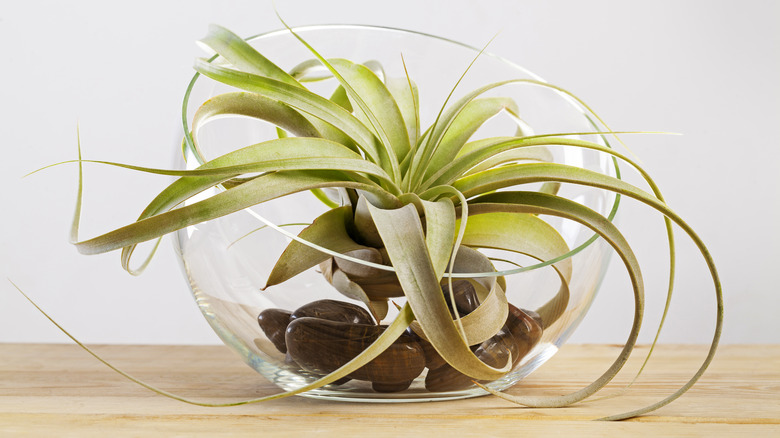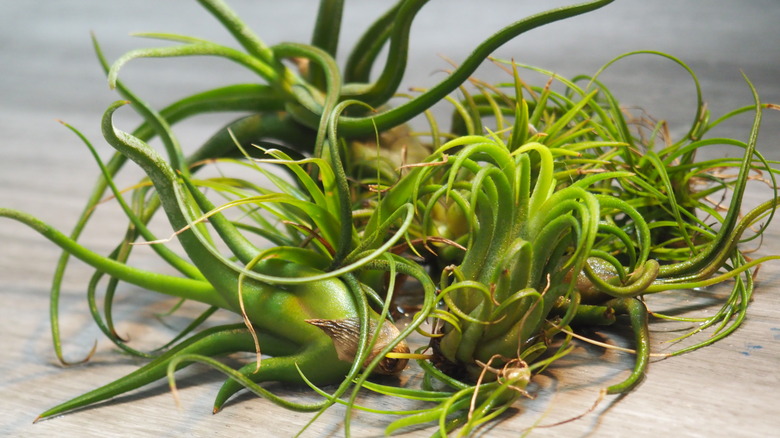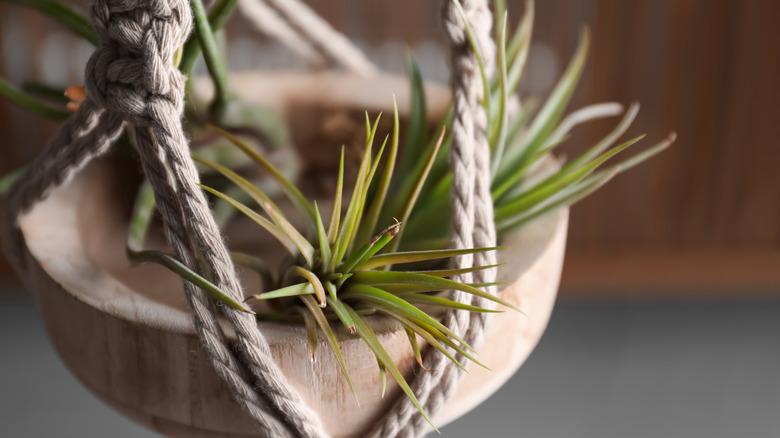How To Identify What Kind Of Air Plant You Have
Part of the Tillandsia genus and Bromeliad family, air plants are native to tropical and desert regions in North and South America. They collect all their water from the air using hair-like cells on their limbs called trichomes. While they only flower once in their lifetime, their funky shapes and spiky designs are just as intriguing. Many people love to incorporate these epiphytic plants into their homes because of how low maintenance they are — they don't even require soil after all. How much easier can it get?
Air plants are perfect for small spaces; they are pet friendly and help clear stuffy indoor air of toxins like formaldehyde and benzene. With more than 600 air plant varieties, you may be wondering exactly what kind of air plant you have. Store labels don't always get it right, or maybe you forgot to look at its tag when you bought it anyway. Luckily, there are easy tells that will help you figure out the kind of air plant you have displayed in your home.
Identifying your air plants
Even though there are too many species of air plants to count, you can identify the type by studying the leaves, shapes, and sizes. There are two main categories of foliage that these plants fall into: mesophyte (mesic) and xerophyte (xeric). Mesophytes will be native to more tropical and wet regions, giving off a much more vibrant green. Xerophytes on the other hand, come from dryer places, boasting shades of grey, ashy whites, and subtle blues. Xerophyte air plants will also have a thick layer of trichomes that acclimate them to hotter climates.
Underneath the umbrella terms of mesic and xeric are classifications that get more specific on plant variety. Within the mesophyte group are plants like Tillandsia Abdita branchycaulos, a species that turns pink in extreme sunlight (via Air Plant Supply Co.); and Tillandsia bulbosa 'Belize' which is round in shape with twisted limbs turning outwards (via Air Plant Supply Co.). Some xerophytes include Tillandsia ionantha 'rubra' with a cherry center that distinguishes itself easily (via Succulents Box), and the very popular Tillandsia xerographica with splendid silvery sage green foliage (via Air Plant Supply Co.). Given that there are so many species out there, your best bet is to understand your plant's characteristics and research them individually to make your final determination.
Caring for air plants
While there's an overwhelming amount of different air plants species, you can sigh in relief in hearing that most of their care will be easy. Air plants love bright, partial sunlight, but you can also give them all the light they need with artificial grow lights, just keep them at least 3 feet away from a given light source to avoid scorching. Watering frequency will largely depend on the humidity of your space. Air plants thrive in humid environments and are often placed in kitchens and bathrooms. On average, they will need to be watered once every other week by placing them in a small bowl of water. Allow them to soak for about 15 minutes, shake off any excess water, and allow them to air dry over the next 3 hours.
Terrariums are often used for air plants, and these setups are usually very successful. However, allowing air movement is essential by keeping the terrarium partially open. You can fertilize your air plants, but be careful because it's easy to overdo it. An excellent way to avoid this is by diluting the fertilizer with water and allowing ample time between applications. Air plants may only bloom once in their lifetime, but they can still produce babies, called pups. A happy and healthy air plant will have open, vibrant leaves and produce many pups that you can propagate.


